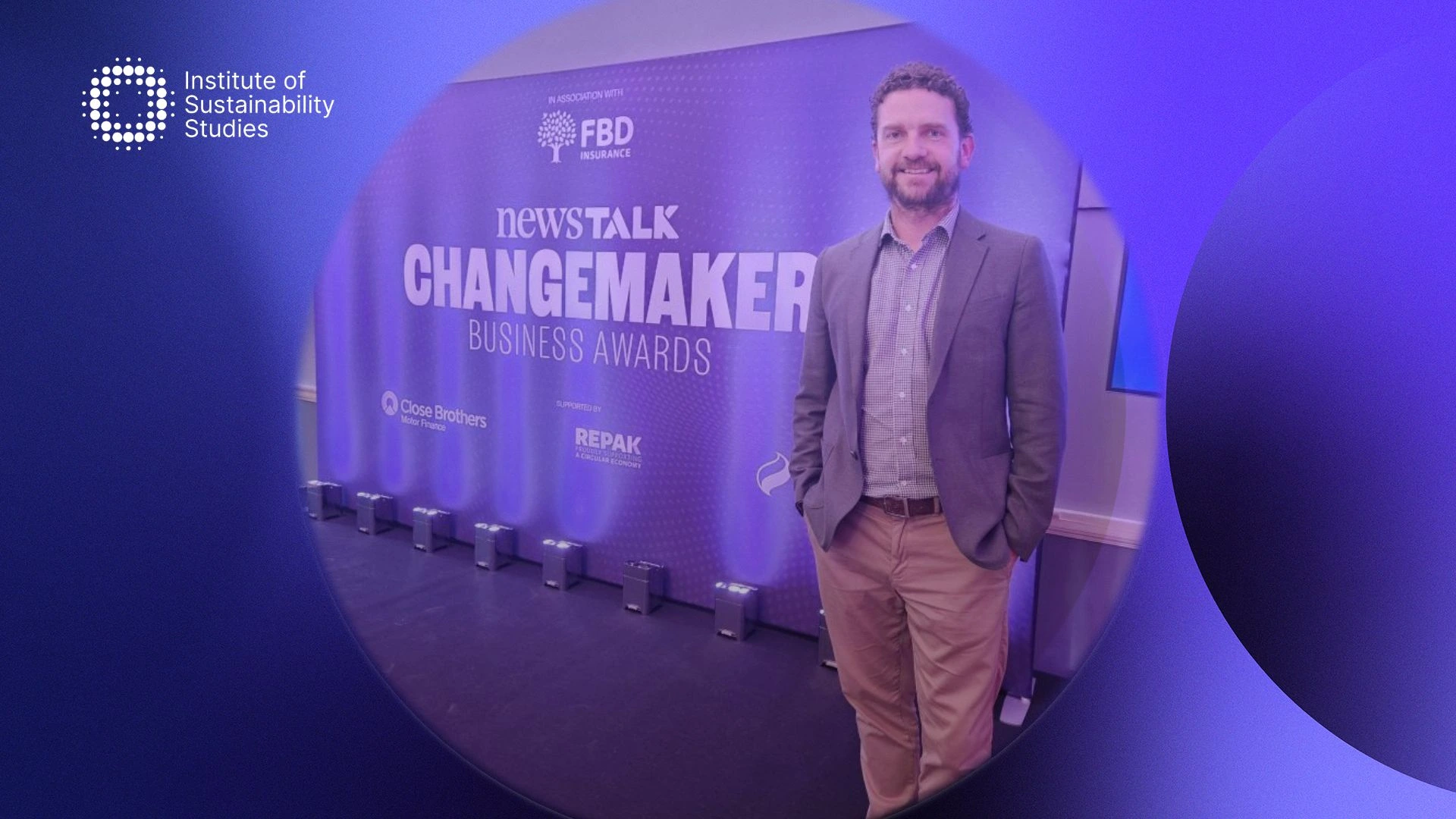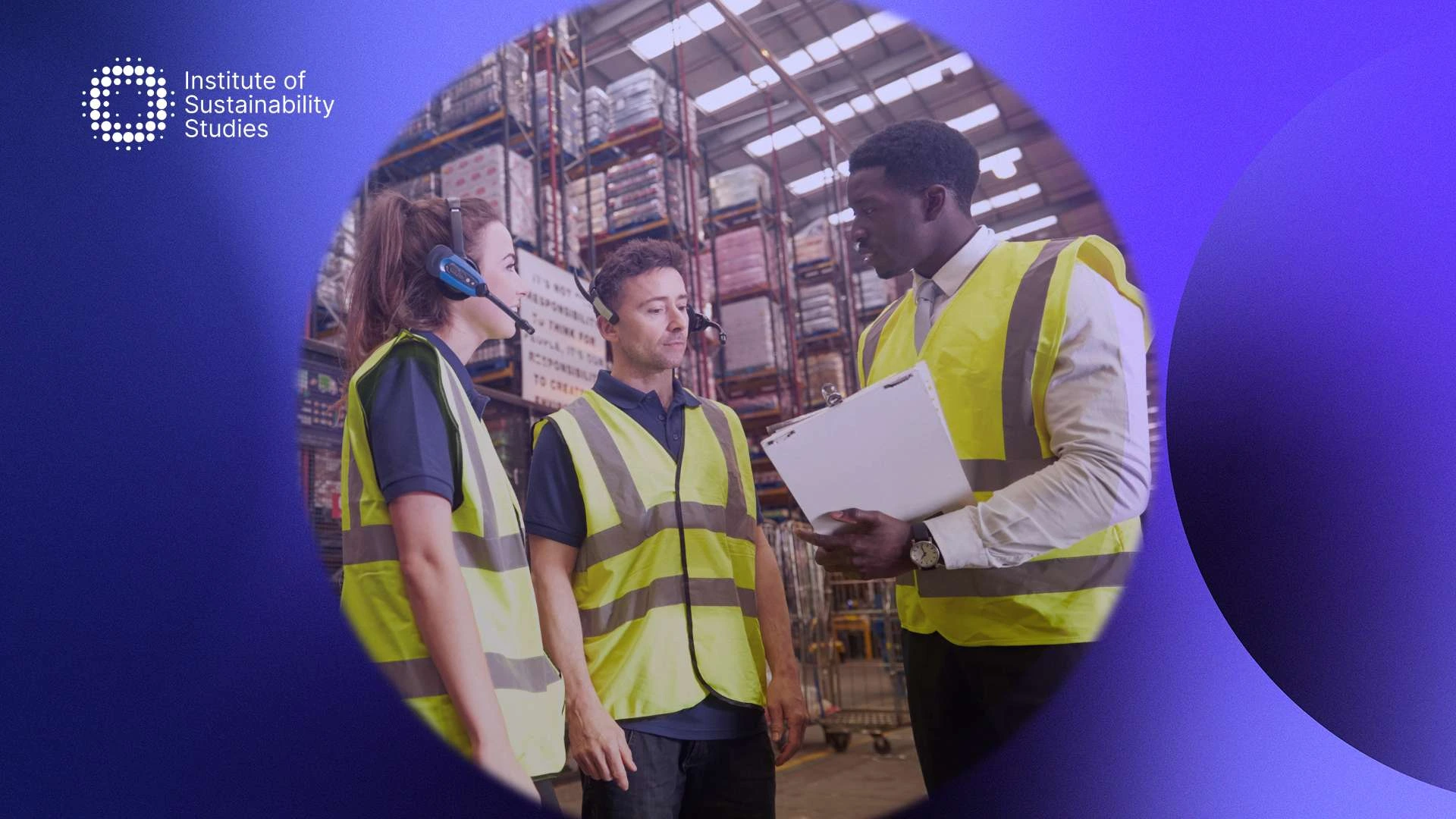We have been warned that we must reduce our carbon emissions for decades. Similarly, businesses of all sizes in every industry realise the importance of sustainability and achieving net zero emissions. In saying that, building a sustainable business is a journey and does not occur overnight.
Therefore, it is about creating a strategy that enables you to track and measure your impact accurately. As a result, understanding what a business’s carbon footprint is and how the emissions are classified is vital. Companies must reduce their environmental impact, and one of the best ways to do this is by monitoring and reducing carbon emissions.
Understanding how the emissions are classified will help you make your business more sustainable and take climate action. Continue reading to learn more about scope 1, 2, and 3 emissions and how you can measure and lower them.
What is a business’ carbon emissions footprint?
Just as individuals have a personal carbon footprint, so do businesses. A business’s carbon footprint is a measurement of its carbon impact on the planet. Essentially, it is the total amount of greenhouse gases you emit directly or indirectly through your business’s activities.
For example, when you ship your goods or create your products, greenhouse gases are emitted, which are tied to your business. If you measure your business carbon footprint regularly, you’ll start to comprehend the many ways your business is contributing to the climate crisis.
But the good news is that you can also pinpoint ways to reduce your footprint and become more sustainable. When measuring your carbon footprint, remember that it may be a lot easier to track your direct emissions than your indirect ones. These indirect emissions come from sources you do not control or own.
However, they are still essential in determining your business’s impact. For example, delivering your goods to customers via a courier or getting materials from your suppliers would be examples of indirect emissions. When calculating your business carbon footprint, it is essential to look at all stages of your manufacturing process and the runnings of your organisation.
What are scope 1, 2, and 3 carbon emissions?
The global world has recognised the need for us to reduce our greenhouse emissions. The Kyoto Protocol in 1997 saw them agree on targets and measures for tackling climate change. This agreement was based upon the Greenhouse Gas (GHG) Protocol. The protocol was launched in 1998 and is a global standard framework for managing and measuring greenhouse gas emissions from public and private sector operations.
It was formed through a partnership with the World Business Council for Sustainable Development and the Water Resources Institute. The protocol essentially helps businesses to manage and measure emissions. In addition, it offers requirements and guidance to help companies prepare an inventory of their emissions, including calculating their Corporate Carbon Footprint.
The Corporate Carbon Footprint includes the total greenhouse gas emissions that come from a business’s activity. This includes indirect and direct emissions. To do this, they have categorised the emissions as scopes 1, 2, and 3. The main idea behind this categorisation is to help delineate indirect and direct emission sources and to ensure two or more companies will not account for emissions in the same scope. But what is the difference between the three? Businesses that successfully report on all three of the scopes are sure to achieve a sustainable competitive advantage.
Learn to implement effective decarbonisation strategies and confidently lead sustainability initiatives within your organisation, with an online, self-paced business sustainability Diploma
Scope 1
Scope 1 emissions are essentially direct emissions from your business. They are company-owned and controlled resources. Put simply, emissions that are released into the atmosphere because of your business activities. Emissions under scope 1 can also be categorised into four sections.
These include stationary combustion like heating and fuel sources. In addition, mobile combustion which consists of all vehicles controlled or owned by the business. For example, vans, trucks, and cars. Then there are fugitive emissions which are essentially leaks from greenhouse gases.
This could include the likes of air conditioning or refrigeration units. Finally, process emissions are another categorisation of scope 1 emissions. These emissions are released throughout industrial processes as well as on-site manufacturing.
Scope 2
Scope 2 emissions refer to those indirect emissions from the generation of purchased energy from a utility provider. Put simply; they are all greenhouse gas emissions that have been released into the atmosphere from consuming steam, heat, cooling, and electricity.
These emissions represent one of the most significant sources of global greenhouse gas emissions. They account for roughly a third of it. These emissions encompass indirect emissions associated solely with the generation of acquired or purchased energy.
Scope 2 accounting is vital for accurately capturing these indirect emissions, particularly as businesses seek to identify reduction opportunities and comply with frameworks like the Greenhouse Gas Protocol and the Taskforce on Climate-related Financial Disclosures (TCFD). It involves calculating emissions from purchased electricity using both location-based and market-based methods, which offer insights into energy sourcing and its impact on a company’s footprint.
Scope 3
Scope 3 emissions then include indirect emissions or emissions that are not owned. They are all the indirect emissions that do not fall under scope 2. Those that occur during the value chain of the reporting company. They result from activities from assets controlled or owned by the business that it indirectly impacts in its value chain.
While these emissions are out of their control, they can still make up a significant portion of their greenhouse gas emissions inventory. Scope 3 emissions are typically divided into downstream and upstream emissions. Downstream emissions are indirect greenhouse emissions within a company’s value chain related to sold services and goods and emitted after they leave the businesses’ control or ownership.
On the other hand, upstream emissions are greenhouse gas emissions within a company’s value chain that relate to the acquired or purchased services and goods and are generated from cradle to gate. Under the protocol, measuring these emissions is considered voluntarily. Namely, because they are the hardest to measure.
How easy is it to reduce scope 1, 2, and 3 carbon emissions?
Reducing scope 1 and 2 emissions is not so challenging. However, scope 3 emissions are much more difficult to reduce since they are the hardest to measure. This is because the activities occur outside the businesses’ immediate operations. In addition, the expectation they should be measured and reported in the first place is new.
Scope 3 emissions are considered voluntary to report, and reporting methodologies are generally experimental. However, businesses should still focus on measuring each scope to get an entire emission inventory.
This will help clarify your impact on the planet so you can become carbon-neutral. Businesses such as Plan A have a range of unique tools to help you measure your emissions per scope.
Measuring scope 3 emissions will help you to:
-
- Determine emission hotspots in your supply chain
-
- Identify the suppliers that are leaders and which do not perform highly in terms of sustainability
-
- Pinpoint energy and resource risks in your supply chain
-
- Engage with suppliers and help them incorporate sustainability practices
-
- Enhance the energy efficiency of your products and services
-
- Improve engagement with your employees to reduce your carbon footprint from employee commuting and business trips
Committing to achieving net zero will involve tackling your scope 3 emissions.
Looking for a short course? Master decarbonisation planning and carbon removal techniques in our CPD-certified Certificate course
How to reduce scope 1, 2, and 3 emissions
When it comes to measuring and reducing scope 1 and 2 emissions, it is a lot easier. Doing things like conserving and reducing your consumption of energy can help.
For instance, finding ways to reduce your consumption, save energy on-site and reduce emissions from your business activities. In addition, having clean energy systems installed on the property can also help as well as creating efficiencies within energy consumption.
Purchasing carbon offsets is also an option that can help reduce emissions. Some examples of carbon offset projects include energy efficiency and forest preservation initiatives. There are a number of organisations that sell these offsets. However, the market remains significantly unregulated. Therefore, you must do your research before purchasing.
Ensure the projects are certified by third-party, independent GHG Project Certification programmes. Some of these programmes include The Climate Action Reserve, the American Carbon Registry, The Gold Standard, and the Verra (Verified Carbon Standard). Participating in utility green power and tariffs programmes can also help you to reduce scope 2 emissions.
Summary
There are many benefits to reporting your scope 1, 2, and 3 carbon emissions. For one thing, it means enhanced transparency as well as improved brand image and reputation. Measuring your emissions will also improve customer trust and give you a greater understanding of exposure to energy, resource, and climate-related risks.
Moreover, it will help you identify the climate maturity of critical value chain players and value chain weaknesses and hotspots. You’ll also likely experience more positive engagements with your customers and employees. Lower resource and energy costs are also commonly associated with corporations that measure their emissions.
Ultimately, though, reporting emissions across the entire value chain will become increasingly difficult to avoid. Reporting on scope 1 and 2 emissions is already mandatory as per schemes such as the Streamlined Energy Carbon Reporting (SECR) and Task Force on Climate-Related Financial Disclosures (TCFD).
It’s only a matter of time before businesses will be required to also monitor scope 3 emissions. If we are to truly decarbonise the planet and fight climate change, businesses need to track, measure, and work at reducing their greenhouse gas emissions.
Institute of Sustainability Studies, working closely with our SAV and Faculty, offers a Diploma in Business Sustainability that will help you gain a comprehensive understanding of key business sustainability topics and learn to put sustainability best practices into action at your organisation. Check out the next course start date and consider enrolling.










